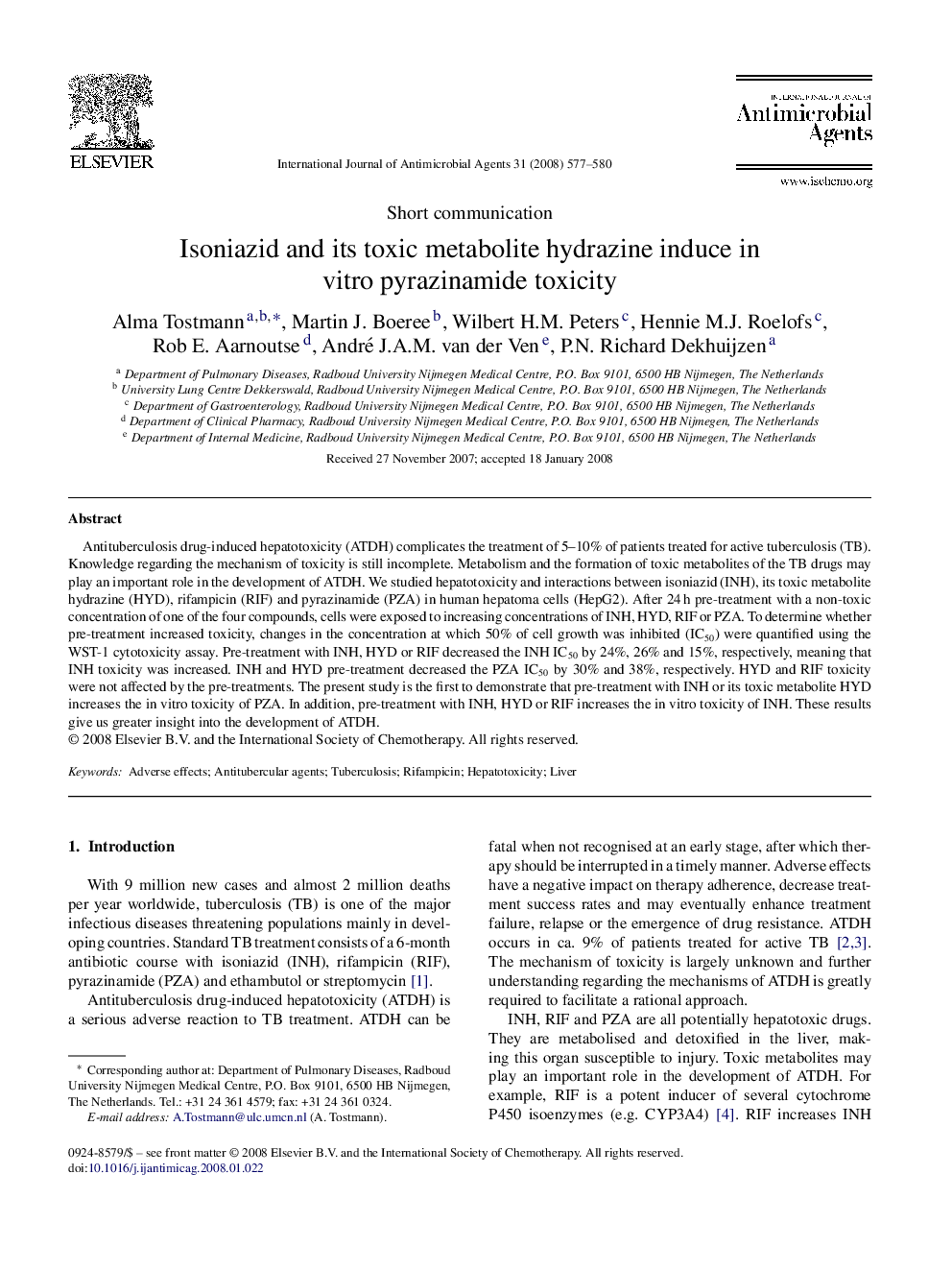| Article ID | Journal | Published Year | Pages | File Type |
|---|---|---|---|---|
| 3360731 | International Journal of Antimicrobial Agents | 2008 | 4 Pages |
Antituberculosis drug-induced hepatotoxicity (ATDH) complicates the treatment of 5–10% of patients treated for active tuberculosis (TB). Knowledge regarding the mechanism of toxicity is still incomplete. Metabolism and the formation of toxic metabolites of the TB drugs may play an important role in the development of ATDH. We studied hepatotoxicity and interactions between isoniazid (INH), its toxic metabolite hydrazine (HYD), rifampicin (RIF) and pyrazinamide (PZA) in human hepatoma cells (HepG2). After 24 h pre-treatment with a non-toxic concentration of one of the four compounds, cells were exposed to increasing concentrations of INH, HYD, RIF or PZA. To determine whether pre-treatment increased toxicity, changes in the concentration at which 50% of cell growth was inhibited (IC50) were quantified using the WST-1 cytotoxicity assay. Pre-treatment with INH, HYD or RIF decreased the INH IC50 by 24%, 26% and 15%, respectively, meaning that INH toxicity was increased. INH and HYD pre-treatment decreased the PZA IC50 by 30% and 38%, respectively. HYD and RIF toxicity were not affected by the pre-treatments. The present study is the first to demonstrate that pre-treatment with INH or its toxic metabolite HYD increases the in vitro toxicity of PZA. In addition, pre-treatment with INH, HYD or RIF increases the in vitro toxicity of INH. These results give us greater insight into the development of ATDH.
